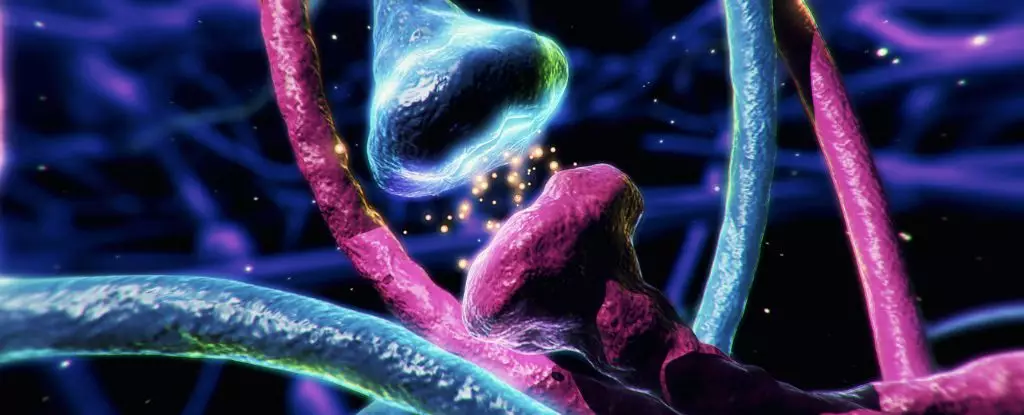For decades, dopamine has predominantly been viewed as a chemical messenger that diffuses throughout the brain, spreading signals in a broad, almost broadcast-like manner. This classical perspective painted dopamine as a long-range communicator, essence of motivation, reward, and motor control. While this model served as a foundational understanding, recent scientific breakthroughs challenge this simplistic paradigm, revealing that dopamine might be much more sophisticated and precise than previously thought. Instead of solely acting as a distant megaphone, dopamine may serve as a fine-tuned whisper, engaging in rapid, localized signaling. This nuance potentially rewrites how we comprehend neural communication and the brain’s capacity for complex, targeted responses.
In this emerging view, dopamine operates on multiple levels—both as a broad broadcast and as a pinpointed messenger. Such duality enables the brain to adapt swiftly and accurately to changing circumstances, from reinforcing rewarding behaviors to executing complex motor actions with minimal interference. This calls into question the longstanding idea that the chemical’s primary role was in diffuse modulation and suggests its involvement in microcircuits that can trigger immediate, localized effects.
Localized Dopamine: A Game Changer in Neural Circuitry
Cutting-edge research, leveraging the latest advances in microscopy and imaging techniques, paints a picture of dopamine as a precisely targeted messenger. Studies utilizing fluorescent markers in live animals have shown that dopamine doesn’t always diffuse widely but can activate neighboring neurons within milliseconds. This rapid, localized signaling appears to influence the immediate environment directly, eliciting swift neural responses, much like a confidential whisper rather than a loud broadcast.
The implications are profound. If dopamine can act in such a targeted fashion, it suggests that many brain functions—initially thought to be driven by broad neuromodulation—are instead orchestrated through intricate, micro-level signaling networks. These findings highlight a layered complexity: the same chemical messenger that coordinates global states like arousal or motivation may also serve as a rapid local switch to fine-tune precise movements or perceptions. From a therapeutic standpoint, understanding this dual signaling mode opens avenues for developing highly targeted interventions, minimizing side effects often associated with broad neuromodulatory treatments.
Implications for Neurodegenerative and Psychiatric Disorders
This refined comprehension of dopamine’s roles is particularly critical when considering disorders such as Parkinson’s disease, schizophrenia, and addiction. Historically, treatments for these conditions have aimed to restore or modulate dopamine levels systemically, often with limited specificity. Recognizing that dopamine also signals locally suggests that some symptoms might stem from disruptions in microcircuit communications rather than just global dopamine deficits. For instance, the degeneration of dopamine-producing neurons in Parkinson’s disease might not only reduce overall dopamine but alter localized signaling fidelity, impairing precise motor commands.
Moreover, the brain’s reward and motivation pathways—core to understanding addictive behaviors or compulsive disorders—may be governed by a delicate balance between broad and localized dopamine signals. Disruptions in this balance could explain why some treatments fail to produce lasting improvements or cause adverse effects. Targeting these micro-communication pathways might, therefore, offer a more effective and nuanced approach to therapy, allowing us to restore the brain’s natural messaging system with greater precision.
Reimagining Future Therapeutic Frontiers
The revelation that dopamine is capable of rapid, targeted signaling fundamentally shifts the landscape of neuroscience research and clinical intervention. Instead of viewing dopamine as merely a global modulator, future therapies could aim to enhance or restore its micro-scale communication channels. This might involve developing drugs or neuromodulation techniques that specifically influence localized dopamine release or receptor activity, reducing undesired side effects linked to widespread alterations.
Furthermore, understanding these localized signals could pave the way for more advanced brain-computer interfaces, capable of decoding the brain’s nuanced chemical language to better manage neurological and psychiatric disorders. As research progresses, the hope is that we move toward a future where treatments are not just about managing symptoms but restoring the brain’s intricate, elegant communication system at every level—macro and micro alike. The brain’s complexity remains astonishing, and every discovery about dopamine’s precise mode of signaling propels us closer to unraveling its most profound secrets yet.

